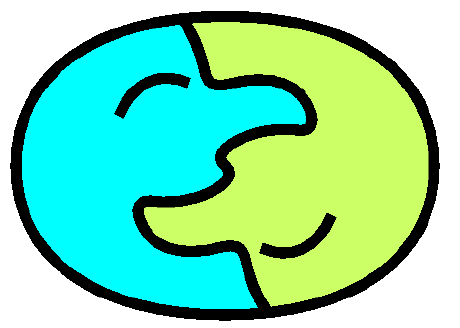थ tha is three sounds [t] [h] [schwa] so Devanagari lipi is hard to draw
with line drawings (rekhachitra)
What actions?
1 nasal/naakwaali-naasika
2 stop/rok-band-viraam
3 fricative/gharsh-sangharshii-gharshaNaa-ashaant vaayu,
4 flap/uchhala-flap (we don't use the voiced bilabial multi-flap (trill) in language).
There are two sources of sound in speech, voice and frication.
Frication at glottis is called aspiration.
Frication is ashaant vaayu - gharsh-sangharshii-gharshaNaa
I will give six examples, are they similar with ashaant vaayu?
The dhvani-srot is not voice from larynx, it is ashaant vaayu at place of constriction
When flow is fixed but airway is constricted then ashaant vaayu occurs.
A noise form the place which is not voice.
(But you can also do voice at glottis.)
5 approximant/sannikaT-vaayumaarg lagbhag band - dono~ taraph nazdiik hae~
(example is [w], with lips apart [oe schwa] with lips together [m schwa]
with lips almost together [w]).
6 liquid-lateral/taral-paarshva (approximant with opening around on side of tongue)
(zabaan band biich me~ ya kendra rekha par band, magar bagal me khulaa)
Also aitch is glottal or ka~Th/galaa/ka~Thanaalii
larynx: स्वर-यंत्र में स्थित ध्वनि उत्पन्न करने वाली रज्जु
ka~Th means throat or guttural (niilakanTh blue-throated Shiva)
tongue/jiibh-zabaan-jihvaa(Skt)
jaw/jabaRa-chibuk-hanu
pharynx/gresani-jalakosh
velar: komal taalu, mulaayam svaad, mRdu taalu
palatal: taalu/taalavya, kaThor taalu, haDDiidaar taalu
sound, tinkling, voice, simple, complex, abstraction, example, palate, soft palate, throat, larynx, nostrils, passing through the nose,
ध्वनि, झनझनाहट, आवाज, सरल, जटिल, अमूर्तता, उदाहरण, तालु, कोमल तालु, गला, स्वरयंत्र, नासिका, नाक से गुजरना,
dhvani, jhanajhanaahat, aavaaz, saral, jatil, amoortata, udaaharan, taalu, komal taalu, gala, svarayantr, naasika, naak se guzarana,
retroflex, vibration, repeating sound
muurdhana, kampan, doharaee jaane vaalee dhvani,
lips tongue jaw mouth throat lungs
होंठ जीभ जबड़ा मुंह गला फेफड़े
honth jeebh jabada munh gala phephade
breath, aspiration, frication, turbulent flow of air
साँस, आकांक्षा, घर्षण, हवा का अशांत प्रवाह
saans, aakaanksha, gharshan, hava ka ashaant pravaah
one thing/sound/consonant being one still has three ideas, three properties: Voicing, Place of articulation, manner of articulation.
एक चीज में, एक ध्वनि, एक व्यंजन, तीन विचार, तीन गुण हैं: आवाज, अभिव्यक्ति का स्थान अभिव्यक्ति का तरीका।
ek cheez mein, ek dhvani, ek vyanjan, teen vichaar, teen gun hain: aavaaz, abhivyakti ka sthaan abhivyakti ka tareeka.
in [m] is voicing, nasality, nasal manner, and labial place, at the lips
[म] में आवाज, नासिका, नासिका ढंग और होठों पर लब स्थान है
[m] mein aavaaz, naasika, naasika dhang aur hothon par, lab sthaan hai
voicing place action
aavaaz jagah karma
vowel consonant tone
svar vyanjan svar
linguistic phonetics
bhaasha-dhvani-vigyaan
sound
dhvani, naada, aavaaz.
|
